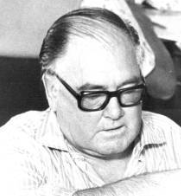 Sir Hughie Edwards VC, DSO and DFC was a fearless wartime bomber pilot and Australia’s most decorated warrior of World War II. He became Governor of WA in January, 1974, but his 15-month tenure was a disaster. His war-hero status has caused his vice-regal mishaps to be covered up. His only full-length biographer, Arthur Hoyle, skips across the period in only six paragraphs, remarking (p199), “Success in the job eluded him”.[1]
Sir Hughie Edwards VC, DSO and DFC was a fearless wartime bomber pilot and Australia’s most decorated warrior of World War II. He became Governor of WA in January, 1974, but his 15-month tenure was a disaster. His war-hero status has caused his vice-regal mishaps to be covered up. His only full-length biographer, Arthur Hoyle, skips across the period in only six paragraphs, remarking (p199), “Success in the job eluded him”.[1]
Hughie Edwards’ second wife was Sydney socialite Dorothy Carew Berrick, nee Nott. “The good thing about Hitler, he got rid of those Jews,” she remarked to me and my then-wife Carolin when we overnighted with them in mid-1973. Here’s how it happenened: Carolin had told me Hughie (pictured above in his final years) was her godfather. Somehow we got the invitation to their Darling Point apartment.
Hughie’s first wife, Cherry, died in 1966, and he’d married Dorothy (“Doff” to her friends), in September, 1972, at the registrar-general’s office. He was her third husband after Gerald Armit (from 1939) and Major Robert Hugh Asquith Berrick aka “Beau Berrick” (from 1947).
At the time Hughie was Australian resident director and door-opener for the UK mining giant Selection Trust. He’d become wealthy because Selection Trust had tenements in the middle of the Poseidon nickel field. When Poseidon ran from 33 cents to $280, Selection Trust shares took off too and Hughie’s investments in the company soared.[2] He and Dorothy moved in elevated company, particularly race horse owners and business VIPs such as Gordon Jackson, chief executive of CSR.
I was raised in Willagee, a WA Housing Commission suburb, and had no experience with Sydney high society. I didn’t find a snapshot by a Sydney Morning Herald gossip writer (5/5/68) all that helpful: “On the whole, Sydney Society is a kind one – not too bitchy, and everyone seems to love each other madly.” Maybe Dorothy invited us because my Canberra by-line in The Age suggested useful contacts. I was 33. Hughie was 59, and Dorothy 55. Hughie died in 1982, Dorothy in 2000 and Carolin in 2016. So I’m the sole living witness.
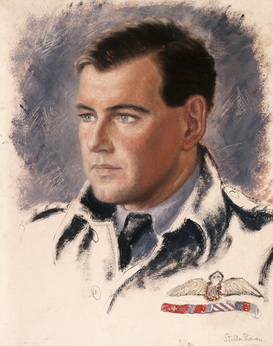 The apartment in a small tower block had a direct view down to the Harbour Bridge. It was full of Dorothy’s antiques and art. She greeted us with practised and excessive enthusiasm. She was tall and slim, with high cheekbones, a strong jawline, an aquiline nose and cut-glass diction. Hughie, tall and heavily-built, was stolid and reserved. Both were downing drinks in strengths and quantities far beyond the abstemious Thomas couple’s experience. Both limped slightly, Hughie (in uniform at right) from a 1938 RAF crash (left leg) and Dorothy from a 1970 street accident (also left leg).
The apartment in a small tower block had a direct view down to the Harbour Bridge. It was full of Dorothy’s antiques and art. She greeted us with practised and excessive enthusiasm. She was tall and slim, with high cheekbones, a strong jawline, an aquiline nose and cut-glass diction. Hughie, tall and heavily-built, was stolid and reserved. Both were downing drinks in strengths and quantities far beyond the abstemious Thomas couple’s experience. Both limped slightly, Hughie (in uniform at right) from a 1938 RAF crash (left leg) and Dorothy from a 1970 street accident (also left leg).
I’d recently acquired a box set of 33rpm vinyl records of English actors doing Shakespearean readings. They bowled me over. I brought the box as a show-and-tell ice-breaker. In a lull before dinner, they seemed happy to hear a sample. I chose Shylock’s speech from The Merchant of Venice ending, “If you prick us, do we not bleed? If you tickle us, do we not laugh? If you poison us, do we not die? And if you wrong us, do we not revenge?”
There was an awkward silence. Dorothy said off-handedly, “The good thing about Hitler – he got rid of those Jews.” My wife and I exchanged appalled glances. Hughie didn’t react – maybe he didn’t hear it or it didn’t register. We found it beyond bizarre that Australia’s most decorated warrior had married a woman who thought nothing of popping an obscene appreciation of Hitler into social chit-chat.[3]
Hughie’s black Mercedes was in the basement car park. I thought Dorothy would drive, as she seemed more sober, but Hughie took the wheel and we somehow made it to the restaurant. He continued drinking and, sad to say, passed out, his head slumped among the plates. Waiters joined Dorothy in bringing him round, more or less. We all helped tug him back to the Mercedes. My wife and I got into the back seat. Dorothy opened the driver’s door. I assumed she would be driver. To our renewed horror, she organised for the barely conscious Hughie to be pushed behind the wheel.
Hughie turned the key for the trip home, fortunately only a few kilometres. Traffic was light. Hughie weaved the car to the apartment block. He dipped down too fast into the basement, missed various obstacles and with a resounding crash, piled up on a pillar. It was a big heavy car and even the low-speed impact was considerable.
None of us was hurt. We sat for a few seconds collecting our wits as glass tinkled and the radiator hissed from the crumpled front. Arthur Hoyle’s biography of Hughie includes: “He was always a poor car driver who, over the years frightened family, friends and subordinates … it was considered to be extremely dangerous to be a car passenger in any vehicle which he drove.”[4]
Dorothy sprang into action. With our help she dragged Hughie out of the car and shouted, “Get out of here fast!” He disappeared via a basement door.
The impact on the pillar had sent a tremor through all storeys of the block. Dorothy took up a pose by the driver’s side door. Doors opened and residents swarmed in with a hubbub of questions and concern. Dorothy maintained her sang froid, apologised for her poor driving and promised that car debris would be dealt with next day. Given that the three of us were merely shaken up, the crowd drifted off to draw their own conclusions, and soon after, we re-united with Hughie in the apartment.
The couple resumed drinking and we went to bed – it had been quite a day. But it was also a long night. Through the walls we could hear Hughie and Dorothy in altercation into the small hours, fuelled by their day’s massive intake of alcohol. In any marriage, including mine, domestics can be noisy but this one was off the scale.
From the moment we woke next morning, we packed our bags for instant departure as soon as we could mouth a polite goodbye. The Edwards were equally keen to see us go — unwelcome eye-witnesses in any fall-out with co-residents (not to mention insurance assessors) over the prang. Plus, our visit had not really been a hit.
A few months later, on October 13, The West Australian reported that the appointment of Hughie Edwards VC was imminent as Governor of Western Australia. The Tonkin (Labor) government had chosen him to replace Sir Douglas Kendrew, who retired in October 30, 1973. Knowing what I knew, and with my Sandgroper background (including a decade with The West Australian), I followed events from my perch in Canberra.
HUGHIE took office on January 7, 1974. He got off to a terrible start and within three months, Dorothy had brought the vice-royalty into total disgrace with a criminal offence. A year later, Hughie resigned on health grounds and the pair, with no formal goodbyes or public thanks to anyone, departed Perth secretly on a Saturday night east-bound Ansett flight.
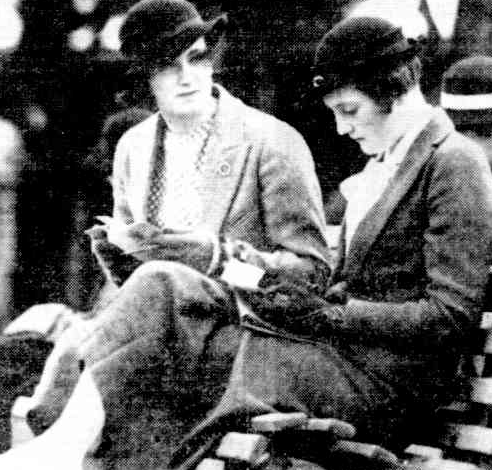 I’ll first provide some background on Dorothy, a nonentity relative to her famous husband. She was born in England to a leading Adelaide couple. Her father, sought-after medico Dr Harry C. Nott, had a two-storey mansion in Hutt Street. He was a cricketer and an international-standard golfer. He was also prominent in the city’s Aero Cub, when aviation was a dare-devil hobby. On Boxing Day 1930, for example, he set off with four other Gypsy Moths to Kangaroo Island. Someone had forgotten to fill his tank and nearing hilly terrain at the coast, the engine died. He managed to skilfully force-land, emerging unhurt from the wreck.
I’ll first provide some background on Dorothy, a nonentity relative to her famous husband. She was born in England to a leading Adelaide couple. Her father, sought-after medico Dr Harry C. Nott, had a two-storey mansion in Hutt Street. He was a cricketer and an international-standard golfer. He was also prominent in the city’s Aero Cub, when aviation was a dare-devil hobby. On Boxing Day 1930, for example, he set off with four other Gypsy Moths to Kangaroo Island. Someone had forgotten to fill his tank and nearing hilly terrain at the coast, the engine died. He managed to skilfully force-land, emerging unhurt from the wreck.
As a teenager Dorothy used to stop the traffic by promenading with two borzois, hefty Russian wolfhounds and recorded frequent mentions in the social pages (as at the Cheltenham races in 1934 at left, where she snapped studying the form). She “came out” at 18 in 1937 with a ball for 150 at the South Australian Hotel.[5] Two years later a society wedding report gushed,
SMART and slight in a well-cut frock of black Angora, was ‘Doff’ Nott, who will so soon be a bride herself. She wore a little pancake of pleated black felt totally obscuring one eye, and topped by velvet bows in three shades of cyclamen, which gave it just that air of Parisian chic so necessary nowadays — and so difficult to achieve by all but a talented few. (Mail, 22/4/39).
Her own wedding on May 9, 1939, got saturation Adelaide press from uber-diligent columnists such as “Lady Kitty” .[6] She married a Scot, Gerald Armit, an agricultural adviser in Soebang, Java. The wedding’s lustre is suggested by the task allocated to Adelaide’s Lady Bonython — to do the floral decorations for the church.[7] Dorothy’s outfit was recorded in super-human detail. A small sample:
“Parchment toned satin, slightly gathered at each side of the bodice, with square neckline and long sleeves, a band of the satin round the bodice being finished with a flat bow in front; a long train trailed softly from the centre panel at the back. A tiara of orange blossom on the hair held in place the misty tulle veil, which fell to the edge of the train. The whole toilette effect was most striking.” (News, 9/5/39)
The five bridesmaids came up the aisle not with bouquets but with left hands linked by a “fong” – a gold cord and gold-leaf clusters forming a pendant between each link.
The plan was for the couple to spend two days at the family’s hills cottage and then board the SS Otranto for England for six months. The hills touring was interrupted next day when their car came upon a head-on collision between a car and a buckboard, and the couple drove two women to hospital with head and leg injuries. I wonder how Dorothy coped with the gore.
They eventually settled back in Soebang in the expat club lifestyle, amid tiger-infested forests. she was an amateur actress and played “Diana” in French without Tears in Soebang and Batavia, raising money for a Spitfire Fund. Events after the Japanese invasion in early 1942 are opaque. She got out of Java ahead of the Japanese invaders and found a job in Canberra as a typist. Later she was with the Australian Women’s Army Service and the Ministry of Munitions as a driver in Sydney, uniform being dark green with a beret. Gerald had been wounded and became a Japanese civilian prisoner of war.[8] I don’t know if he survived.
In 1946, Dorothy Armit was back in the UK and working in Australia House. In February, 1947, in Guernsey, she married Major “Beau” Berrick, 41, a Briton of Canadian origin. She returned with him and their infant son, David, to Sydney in 1949 and by the late 1960s they were pillars of the Sydney smart and racing set: “Doff is a perfectionist. She’s fun, she loves color, loves people”, gushed one social item. Another put it, “Mrs Edwards, who wears her hair swinging loose, schoolgirl-style from an Alice band, is vital and vivacious.” A fiftieth birthday present, as reported by the Sydney Morning Herald, to Dorothy was “a plastic severed hand that when wound up, crawled across the floor”. SMH 8/12/68. In September 1972, the hand of fate saw her married to Air Commodore Hughie.[9]
Soon after our visit in mid-1973, the front page of The West Australian leaked Hughie’s impending governorship. Premier John Tonkin had done the recommending the previous month but the Queen had not formally agreed. Tonkin was mortified and extremely annoyed. “The report puts me in the position of a breach of confidence,” he said. He thought he would have to apologise to the Queen.[10]
For his part, Hughie leapt at the vice-regal offer: “There’s not a chance of me bailing out of this one if the Queen has the recommendation,” he said. Hughie would have done better on protocol by declining to comment. Obviously Tonkin would have sounded him out earlier. The leak was attributed to “informed sources”. Hughie denied he leaked. There’s one clue to the leaker, the prediction in The West’s report: “The Governorship almost certainly will bring him a knighthood from the Queen.” So who stood to benefit by leaking? Dorothy knew of the impending appointment and was keen to be Lady Edwards, trumping all female rivals for top-dog social status. Soon after, she was going public in advocacy for this knighthood.[11]
The appointment was for three years with a further two-year option. By mid-December, a few weeks before appointment, Hughie confessed, “In fact I haven’t had a chance to think deeplv about it [the job] yet”. He had been aware of his impending elevation for around two months.
Hughie in his inaugural press conference as governor (8/1/74) not only announced that his lack of knighthood was “invidious” to himself and the State, but disclosed that he’d been lobbying the Premier Tonkin about it. Tonkin in fact was bound by federal Labor policy against overseas honours. So Hughie, the Queen’s representative, was demanding an honor from the Queen that the then Premier couldn’t approve, and disclosing conversations Tonkin would have thought were confidential. (Walter Bagehot 150 years ago in his classic text The English Constitution ranked keeping State confidences as the third of top three duties of royalty [and hence vice-royalty]).[12] All round, Hughie seemed either ignorant or heedless of his duty “to promote civic unity and high ideals”.[13]
DOROTHY’s previous and only two visits to Perth had involved the Perth Cup. Her first presser in Perth as the governor’s wife started well, as she chatted with assurance about things like her willingness to catch buses. In a haunting sentence she said, “I have no idea yet what is expected of a governor’s wife but I am willing to learn.”
Asked about Perth frock shops, she hit the softball right out of the stadium, saying she didn’t frock-shop at all: “I hate shopping and have all my clothes made by a Sydney dressmaker so I don’t think I’ll be changing. I had an accident in Sydney in 1970 and have found it difficult to find clothes to fit since.”
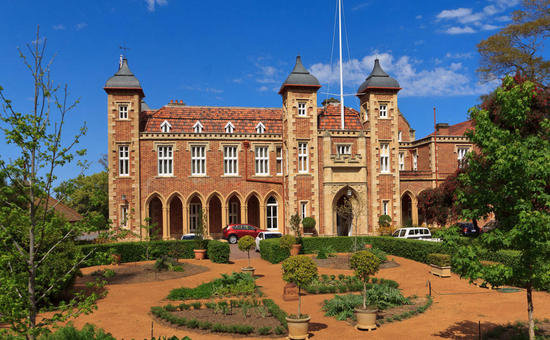 Hughie and Dorothy settled in to Government House (left). Three months later, on the afternoon of Wednesday, April 13, Dorothy walked outside and smashed the glass of a fire alarm a few metres from a permanently manned watchhouse. She pressed the red button and 15 firemen arrived from the nearby St George’s Terrace depot with a swivel ladder, two pumps and a resuscitation unit. Dorothy told them she just wanted to see how long they would take to arrive. Their quarter-mile sprint along St George’s Terrace took just one minute.
Hughie and Dorothy settled in to Government House (left). Three months later, on the afternoon of Wednesday, April 13, Dorothy walked outside and smashed the glass of a fire alarm a few metres from a permanently manned watchhouse. She pressed the red button and 15 firemen arrived from the nearby St George’s Terrace depot with a swivel ladder, two pumps and a resuscitation unit. Dorothy told them she just wanted to see how long they would take to arrive. Their quarter-mile sprint along St George’s Terrace took just one minute.
She claimed to be worried about fire safety at Government House. She hadn’t bothered to phone the fire station first and she told the press later that she was well aware of having committed an offence. She offered to pay any fine involved, unaware that the maximum penalty was actually six months gaol with hard labor. Frankly I’d say she’d been drinking when she smashed the alarm glass.[14]
The next day’s West said that fire prevention officers had inspected the building and found it was not a bad fire hazard.
Mrs Edwards’ action drew strong criticism yesterday from the Fire Brigade Employees’ Union and the Fire Brigade Officers’ Association. The acting secretary of the two bodies, Mr Ian Hills, described the action as stupid and irresponsible, particularly because it had been done by such a prominent person.
“It is this type of irresponsibility that hinders the eradication of a menace that plagues all emergency services,” he said.
“The Fire Brigade has no way of knowing if an alarm is false, and fire crews travel to these calls as quickly as possible through heavy traffic.”
Mr Hills said that firemen and officers were incensed at Mrs Edwards’ action. It could have caused tremendous disruption if the brigade had been engaged in genuine calls at the time.
He said: ‘As part of her further education, the Governor’s wife should visit the fire brigade to see the difficulty that false alarms create.’
The union and the association believed they had a duty to warn the public against such foolishness, he said.
The maximum penalty laid down by the Fire Brigades Act for wilfully making a false fire call is a fine of up to $100 and imprisonment for up to six months with or without hard labor.
“A prominent Perth lawyer said yesterday he did not believe that Mrs Edwards would be immune from prosecution.”
Justice not really being blind, Dorothy escaped prosecution. [15]
Hughie’s reaction to his wife’s (literal) clanger can only be imagined. This was a man who had risen to within striking distance (a 50:50 chance, he was told), of making RAF Air Vice-Marshall, and whose Cold War fighter base had guarded the main US nuclear bomber force at Skulthorpe. After the alarm episode, Dorothy dropped out of prominence.
Hughie from the start had dispensed clangers of his own. In his first press interview on November 8, 1973, he said ominously that he “did not intend to be a mere cipher… Certainly one should keep out of politics, but on matters which are not political, I feel that one should express a point of view.”
Still, he harried the hapless Labor Premier about his entitlement to a knighthood. An ardent royalist, he said God Save the Queen should remain our national anthem. He also put down the aggrieved faction in WA seeking secession, comparing the quest to “these African colonies” which had gained recent independence but lacked the money and “brainpower” to pay for their nationalist extravagances.
He had told West Australians he was “a democratic chap” but his knighthood demand suggested otherwise. His claim won the prompt support of Opposition Leader Sir Charles Court, making Premier Tonkin look churlish. He evinced no knowledge of vice-regal protocol, conveniently set out by Governor-General Paul Hasluck. Sir Paul advocated in late 1972 a foundation of knowledge about machinery and processes of government, and relations with prime ministers and premiers based on “confidence, tact and firmness.”
Offended West editorialists commented, “In taking up the cudgels with almost indecent haste in defence of the [knighthood] principle, Air Commodore Hughie Edwards VC has left himself wide open to criticism that his real concern – despite denials – is for the person, not the office.” But the editorial concluded that knighthoods should be awarded automatically to governors as first citizens. Hughie’s urgings were taken up by columnists – probably tongue-in-cheek – and as far afield as The Times in London. Virtually any media reference to Sir Hughie thereafter – including his obituaries — included add-ons about his quest for a knighthood.
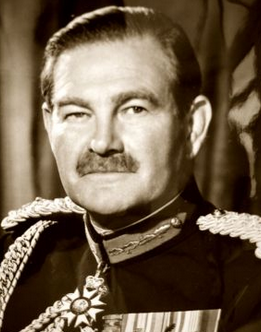 Hughie’s trouble-making was doubly painful to the Labor Premier because Hughie’s predecessor, Sir Douglas Kendrew (left), a British un-modern major-general, a few months earlier had meddled outrageously in favour of Opposition Leader Sir Charles Court. (Perth’s Governor/Government relations in the early 1970s had a High Noon quality). Tonkin had a bare one-seat majority in the WA Lower House and an Upper House minority. Kendrew was in league with Queensland’s reactionary governor Sir Colin Hannah (formerly the RAAF Air Marshall and a Perth boy). The pair was all for a state premiers’ revolt led by Charles Court against what Hannah publicly called “the fumbling ineptitude” of the Whitlam government. Kendrew believed “Court was the only man who could save Australia”. He therefore urged Court to block Supply but Governor-General Paul Hasluck warned Kendrew off.[16]
Hughie’s trouble-making was doubly painful to the Labor Premier because Hughie’s predecessor, Sir Douglas Kendrew (left), a British un-modern major-general, a few months earlier had meddled outrageously in favour of Opposition Leader Sir Charles Court. (Perth’s Governor/Government relations in the early 1970s had a High Noon quality). Tonkin had a bare one-seat majority in the WA Lower House and an Upper House minority. Kendrew was in league with Queensland’s reactionary governor Sir Colin Hannah (formerly the RAAF Air Marshall and a Perth boy). The pair was all for a state premiers’ revolt led by Charles Court against what Hannah publicly called “the fumbling ineptitude” of the Whitlam government. Kendrew believed “Court was the only man who could save Australia”. He therefore urged Court to block Supply but Governor-General Paul Hasluck warned Kendrew off.[16]
On April 8, 1974, Court succeeded Tonkin as Premier. Within a month Hughie was somehow awarded a Clayton’s knighthood – a Knight of Grace of the Order of St John, which didn’t entitle him to be called ‘Sir’ and, possibly more to the point, left his wife still as Mrs Edwards.[17] Again came snide press comments, “Poor Air Commodore Hughie Edwards. All that fuss and bother…We believe, however, that even better things lie ahead,” noted the SMH. On August 26 Sir Charles finally transformed the vice-regal couple to Sir Hughie and Lady Edwards.[18] (Hoyle’s biography mis-attributes the knighthood to Tonkin).
The press again rejoiced with headlines like “No longer odd man out” – as if my louche reporter colleagues gave two hoots about Hughie’s amour propre. Sir Hughie delivered another of his ‘non political’ interviews, rubbishing the Whitlam government for dispensing with foreign honors. This was not only gross for a governor but pointless since premiers were free to recommend imperial honors through the Foreign and Commonwealth Office.[19]
In an interview in Melbourne before taking up the post he said he “had been mixing with people all my life. I will be looking forward to seeing as many people as possible.” But now he confessed to finding continuous official listening, speech-making and talking to people ‘extremely arduous’ .[20] These chores were the essence of the job, which included a $25,000 salary at May 1974 (today’s equivalent, $200,000 tax-free) plus Government House, staff and a stack of fringe benefits.[21]
A few months later Sir Hughie entered a three-month spell of ill health and sick leave. He had three operations for head and stomach conditions attributed to war injuries. On April 2, 1975, he announced he would resign on health grounds, although his doctor a month previously had cleared him fit for duty.[22] The West Australian (3/4/75) got it wrong by assuming his announcement was the same thing as his actual resignation.
His departure, like his arrival, was controversial, with The West headlining, “Sir Hughie flies out secretly”. For more than 40 years the public has accepted the sanitised “medical health” rationale. The media accounts were based on official disinformation, though some elements were factual. The real story is disclosed only in a sentence and a footnote in a 2008 book by University of Tasmania Professor Peter Boyce AO, a specialist in British Commonwealth vice-regalisms.
Sir Hughie notified his resignation while Premier Court was in Tokyo, and only several weeks before Sir Hughie and Lady Edwards were to host Princess Anne and Mark Phillips as live-in guests at Government House. The Deputy Premier, Mr McPharlin, had to dump a civic reception to attend on Sir Hughie, saying the summons was a ‘big surprise’. When Sir Charles returned and organised a visit to Government House to smooth the departure issues, he was told that Sir Hughie was too ill to see him. Sir Charles had to consult with Lady Dorothy and Secretary Col J. Burt instead. (One wonders why no-one phoned the Premier to postpone his visit).
The Edwards’ late-night Saturday exit from Perth via Ansett was a further curiosity. Far from doing gracious goodbyes and a thank-you to the government and people, they enjoined secrecy on Ansett and a handful of insiders. Their departure date had been officially left open — and suddenly they were gone, leaving Government House vacant and Premier Court ostensibly in the dark. Someone threw the press off the scent by leaking that the Edwards’ had headed for a NSW country property.
A strange West report (7/4/75) quoted Premier Court saying he did not know where Sir Hughie had gone.
“He had not inquired because it was Sir Hughie’s private business and had nothing to do with the government…
The Government House Secretary, Colonel J. Burt, would say only that Sir Hughie had gone interstate. He would not say to which State.
Col Burt said he did not think Sir Hughie had any chance of recovering his health till he could get away from all the mental trauma of the past few months.”
Burt’s phrase “mental trauma” – of which the media had never published a word – suggested severe conflicts of some kind. It could have appeared to Perth-dwellers that the pair’s relations with the State government had broken down, and that the Edwards were happy to cause Sir Charles maximum discomfort.
But Perth-raised Professor Peter Boyce, a one-time Murdoch vice-chancellor, writes, “In 1975 Sir Hughie Edwards, Governor of Western Australia, was quietly eased out of office by the Premier after just one year, because of erratic behavior possibly related to alcoholism”[23] In a footnote to this, Boyce reveals, “Edwards was flown, without prior announcement and under the Premier’s direction, to a clinic in Sydney from which he resigned office.”
Boyce got these facts from Sir Charles himself, who had stage-managed the exit – or elements of it – to ensure minimum media intrusion on Sir Hughie. Apart from that apparent lapse with Boyce, Sir Charles had kept the secret 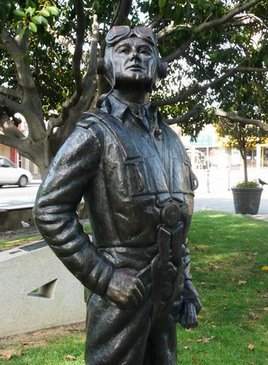 well. According to Boyce (p190) the only governors in the British Commonwealth to have been dismissed were three lieutenant governors in Canadian provinces. A few governors have been quietly eased out, including Victoria’s Sir Brian Murray in 1985.[24] In Quebec, Lt. Governor Jean-Louis Roux in 1996 quit when it became known he had inked a Nazi swastika in 1942 on his medical-student lab coat. His successor Lise Thibault after her term from 1997-2007, got a new term in 2015 of 18 months in prison for having rorted $C700,000 while in office.
well. According to Boyce (p190) the only governors in the British Commonwealth to have been dismissed were three lieutenant governors in Canadian provinces. A few governors have been quietly eased out, including Victoria’s Sir Brian Murray in 1985.[24] In Quebec, Lt. Governor Jean-Louis Roux in 1996 quit when it became known he had inked a Nazi swastika in 1942 on his medical-student lab coat. His successor Lise Thibault after her term from 1997-2007, got a new term in 2015 of 18 months in prison for having rorted $C700,000 while in office.
The Sir Hughie affair is nothing akin to those examples. The nature of what Boyce calls ‘erratic’ goings on at Government House has not been revealed. Possibly there had been gatherings and formal dinners that had gone as badly as my own weekend with the Edwards in Darling Point a year previously. Dorothy’s fire alarm episode – a criminal offense – was not Hughie’s fault but had brought their tenure into public and especially union disrepute. And for any governor to be incapacitated by health issues for three months out of 15 is a serious matter.
I don’t know if the couple’s exit was timed by the Premier to safeguard Princess Anne and Mark Phillips from possible untoward incidents.
In the event, the Edwards settled back in Darling Point. Sir Hughie took up causes such as preservation of first-class cricket at the Sydney Cricket Ground and was often guest of honor among air force groups. He collapsed and died while walking to a Test cricket match at the SCG in 1982.
Supporters financed a life-sized statue (above) of Sir Hughie that was unveiled in 2002 outside St Johns Church, Fremantle. It shows him standing in pilot’s harness scanning the sky for the return of his fellow pilots. That’s the Hughie to be remembered and honored.
Tony Thomas’s previous long essay was Cartel Capers in the Menzies Years (Quadrant, July-August 2017). His 2016 book of essays, That’s Debatable – 60 Years in Print, and his 2018 book The West: An insider’s tales, are available from Connor Court.
___________________________
[1] Hoyle, Arthur, Hughie Edwards VC DSO DFC – The Fortunate Airman. A. R. Hoyle, Canberra 1999.
[2] Ibid p198
[3] Hoyle wrote (p185) that Hughie never expressed any ideological hatred of Germans and appeared to view his air opponents as fellow professionals. I found one comment by war pilot Hughie that his job was “killing Germans”.
[4] Hoyle p203
[5] News Advertiser, 22/4/37
[6] e.g. News, 9/5/39
[7] Lady Bonython found the time despite her roles on 25 Adelaide committees. She went for “ creamy chrysanthemums and Arum lilies, arranged with gilded gypsophila and she-oak in white bowls, and set in the chancel on tall, white stands.”
[8] Trove: No Service Number, Wounded and Prisoner of War. Enquiry Card Index Number: 21705
[9] I assume Berrick had the Major rank in 1947. He was using the Major title in 1960.
[10] Canberra Times 30/10/73, article by Perth’s Athol Thomas (no relation).
[11] “His wife at the time… made some fairly loud calls in the media for Hughie to be recognized as a knight. The knighthood came several months later, I think it was public pressure.” UNE Historian Dr Nathan Wise, ABC radio interview. Dorothy was in line for “ Lady” but State Governors’ wives didn’t have their husbands’ further title of “Excellency”.
[12] Boyce, Peter, The Queen’s Other Realms: The Crown and its Legacy in Australia, Canada and NZ. Federation Press 2008, Annandale NSW. P48
[13] Governors need “ to seize the few media opportunities available with gracious and well-chosen words or gestures.” Boyce, p194
[14] “The community also expects incumbents of Government House to avoid scandalous or radically unconventional behaviour in their own lifestyles.” Boyce, p195
[15] Boyce says (p194), “Absence of scandal from both one’s public life and private or family affairs is certainly helpful…But no less critical is the need for a combination of gravitas and warmth in one’s engagement with the citizenry.”
[16] Paul Hasluck – A Life, by Geoffrey Bolton. UWA Publishing, Perth 2015. P447-8
[17] One of the 25,000 fellow St John holders was another RAF commander, the controversial NSW governor Sir Philip Game. They are entitled to robes and a coat of arms.
[18] Sir Charles’ own knighthood came by seedy means. Liberal Premier Sir David Brand, after losing the 1971 election, insisted before he left office on submitting a recommendation for Court’s knighthood. Brand’s successor Tonkin tore it up, whereupon Court sought the “Sir” from Prime Minister Gorton. Gorton also refused but his successor McMahon succumbed to Court’s lobbying. Sir Henry Bolte not only gave himself KCMG in 1966 and raised it to GCMG in 1972, but made his wife, Lady Edith, a Dame Commander the same year. He failed at lobbying to become Baron Bolte.
[19] Until the 1980s
[20] “A dignified bearing and a flair for public ceremony, accompanied by not merely a capacity for informal interactions with a wide variety of people, but a positive enjoyment of them, are still seen as major contributions to the vice-regal office-holder’s personal standing in the community. Loss of dignity spelt disaster for Sir John Kerr as he struggled to handle the public abuse hurled at him in the months following his dismissal of the Whitlam government…Similarly it was Richard Butler’s undignified behaviour that fuelled much of the public antipathy and government anxiety in Tasmania during 2003–04.” Boyce , p194
[21] But no pension.
[22] “A Governor who lacks a robust physical constitution will be seriously disadvantaged in the discharge of his or her community leadership role as well as in maintaining an effective watchdog role over government.” Boyce, p196
[23] Boyce p196
[24] Sir Brian was described by Labor Premier John Cain as “a shocking Tory” and after a controversy over accepting free air travel he got an advice from Cain “to reflect on his position”.
 Sign In
Sign In 0 Items (
0 Items ( Search
Search








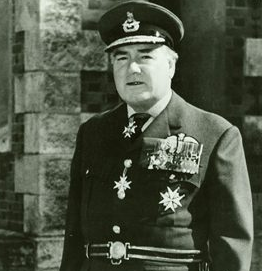

Unfortunately, I can support Tony’s description with an independent incident I witnessed in 1974:
“Governor Hughie Edwards, VC was so drunk at the function he was literally carried through the room (without moving his feet once) and lifted on to his seat. He was incapable of making the traditional speech and was carried out again half an hour later.”
I almost became a Republican, but Turnbull cured me of that option.
A retired RAAF senior officer friend made what I think was a very valid point in discussions about the, to us, strange behaviour of some of the senior RAAF commanders we had both served under in the 1960s. Like Hughie Edwards, these men had survived a very cruel war, having served in Bomber Command and lost many of their friends in horrific circumstances. It should be by no means surprising if their strange ways, particularly their alcoholism and brusque intolerance of what they probably saw as mere foolishness of their young subordinates, were symptoms of undiagnosed, but self-medicated post traumatic stress disorder. VCs are rare in any Service, but particularly so in the Air Forces, and one does not win such an award without experiencing mental trauma beyond the ken of us mere mortals. Back in the day, “Shell shock”, or “combat fatigue” in American terminology, was probably not recognised as a serious mental disorder (by civilians, at least) unless the sufferer exhibited gross behavioural dysfunction. (People old enough to remember the early years after World War II will have little difficulty in recalling many such people in their communities, often callously dismissed as mere “gibbering idiots”. We handle these cases much better today.
Unless we have some significant evidence that Edwards was an alcoholic incompetent even before the war (highly unlikely), I think he deserves a little more respect and sympathy.
So that’s why it’s called the Wild West.